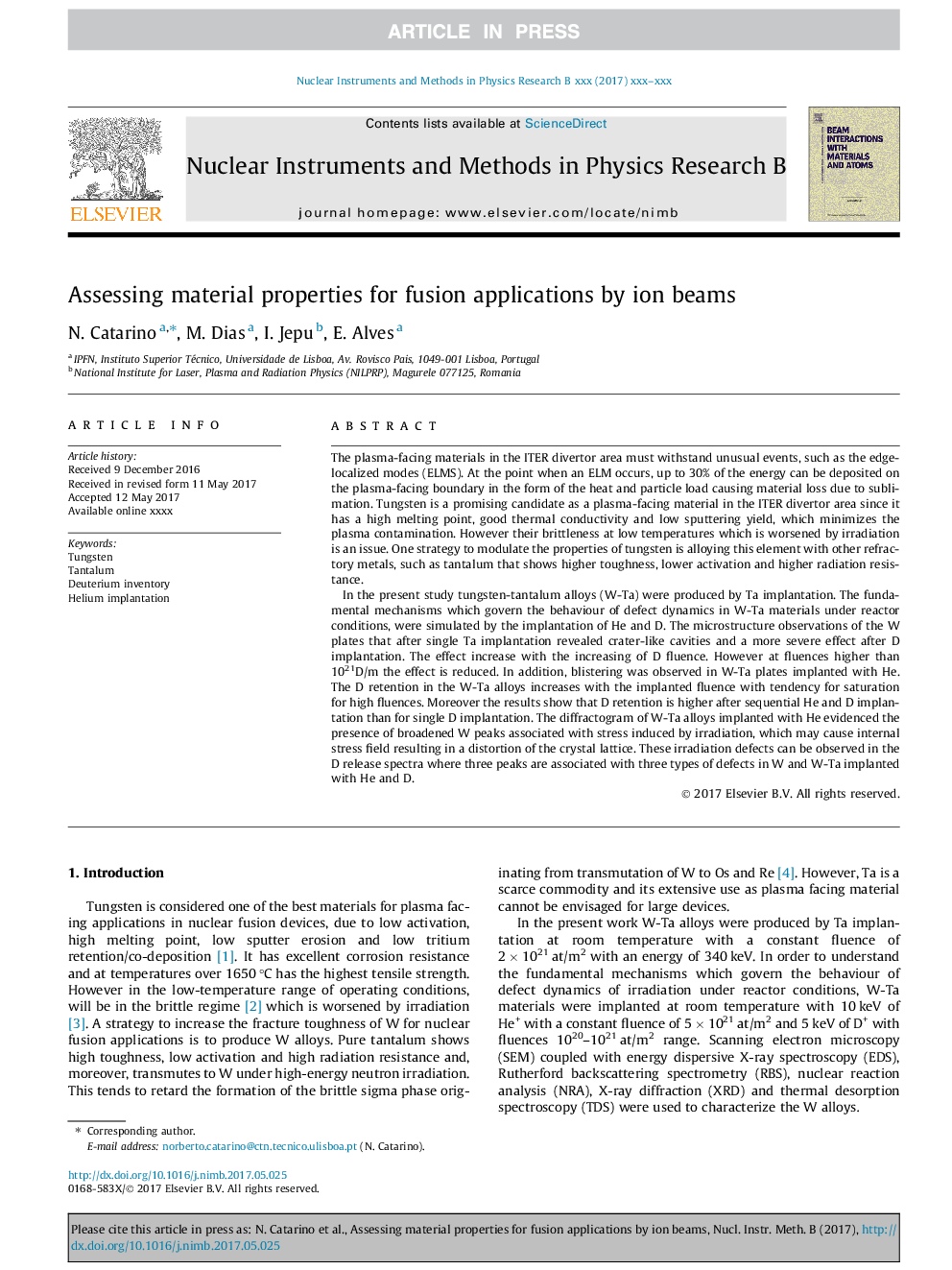| Article ID | Journal | Published Year | Pages | File Type |
|---|---|---|---|---|
| 5467262 | Nuclear Instruments and Methods in Physics Research Section B: Beam Interactions with Materials and Atoms | 2017 | 4 Pages |
Abstract
In the present study tungsten-tantalum alloys (W-Ta) were produced by Ta implantation. The fundamental mechanisms which govern the behaviour of defect dynamics in W-Ta materials under reactor conditions, were simulated by the implantation of He and D. The microstructure observations of the W plates that after single Ta implantation revealed crater-like cavities and a more severe effect after D implantation. The effect increase with the increasing of D fluence. However at fluences higher than 1021D/m the effect is reduced. In addition, blistering was observed in W-Ta plates implanted with He. The D retention in the W-Ta alloys increases with the implanted fluence with tendency for saturation for high fluences. Moreover the results show that D retention is higher after sequential He and D implantation than for single D implantation. The diffractogram of W-Ta alloys implanted with He evidenced the presence of broadened W peaks associated with stress induced by irradiation, which may cause internal stress field resulting in a distortion of the crystal lattice. These irradiation defects can be observed in the D release spectra where three peaks are associated with three types of defects in W and W-Ta implanted with He and D.
Related Topics
Physical Sciences and Engineering
Materials Science
Surfaces, Coatings and Films
Authors
N. Catarino, M. Dias, I. Jepu, E. Alves,
